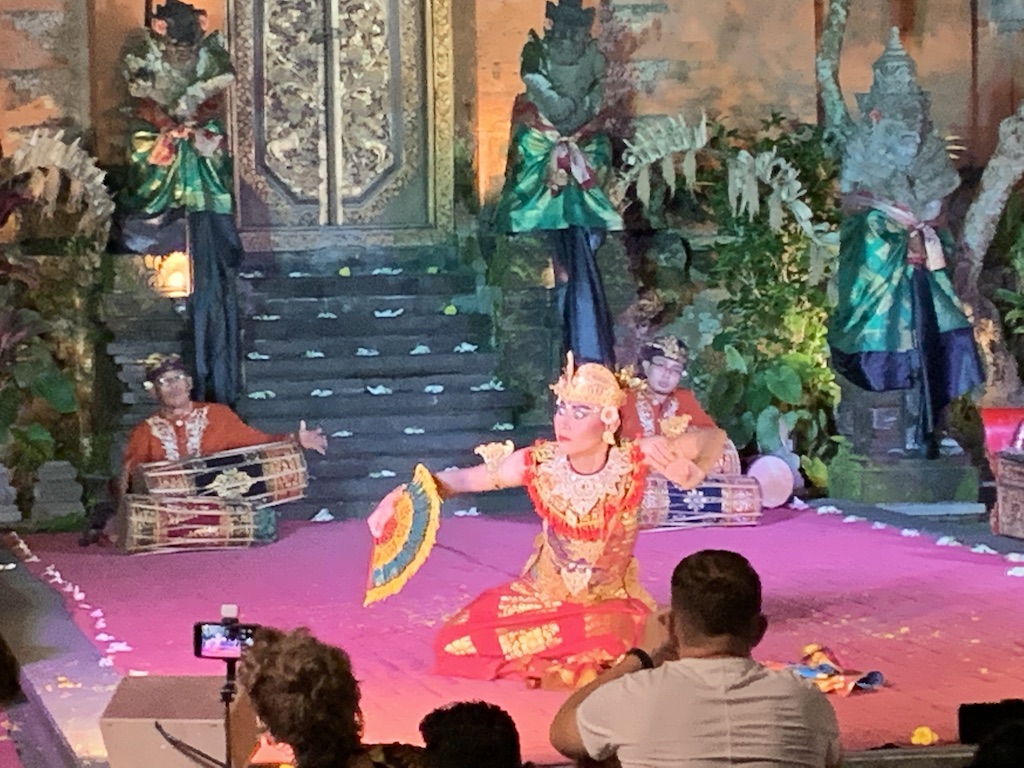Ubud village is integral to understanding Bali’s rich history, providing valuable insights that go beyond the contemporary town.
The origins of Ubud date back to the eighth century when Rsi Marhandya, a Javanese Buddhist priest, came to the area. He meditated at the confluence of the two Wos rivers at Campuan, located just west of what is now the town center.
Nirartha, a Javanese priest renowned for influencing Bali’s religious practices and rituals, initially established a shrine in Ubud and later expanded it. This era stands out for its focus on natural medicine and healing, which inspired the name “Ubud,” derived from the Balinese word “Ubad,” meaning medicine.
Over the next 400 years, Ubud saw the development of several key temples and monasteries. Notable historical sites from this period include the Gunung Kawi temple complex and the cave temples at Goa Gajah, located to the east and northeast of Ubud.
Many of the traditional dances, dramas, and rituals still performed in Ubud today have their roots in this historical period.
During this time, King Airlangga, who ruled both Java and Bali, based his administration in what is now the village of Batuan, southeast of Ubud.
The Javanese Majapahit kingdom conquered Bali in 1343, securing a major victory over the Pejeng Dynasty centered at Bedulu, east of Ubud.
This conquest led to a significant cultural flourishing in Bali, with Ubud’s aristocratic families tracing their lineage back to this era.
By the sixteenth century, as the Majapahit Kingdom moved to Bali due to the spread of Islam in Java, Ubud continued to play a crucial role despite the changing power dynamics among various local rulers and dynasties.
The cave temples at Goa Gajah, dating from the ninth century, are emblematic of this rich historical period. In 1900, Ubud became a Dutch protectorate at its own request, with minimal colonial interference, allowing it to preserve its traditional arts and culture.
The modern era for Ubud began in the 1930s when the royal family welcomed foreign artists like Walter Spies and Rudolph Bonnet, who were instrumental in promoting Balinese art and culture internationally.
By the 1960s, as infrastructure improved, Ubud experienced a surge in tourism and evolved into a prominent global destination while maintaining its status as a central hub for Balinese art and culture.
Place near Ubud Village area
Getting around Ubud is fairly easy once you get the hang of it. The town spreads out several kilometers in all directions, and locals consider the surrounding small villages within about five kilometers of the central market to be part of “Ubud.” If you stay somewhere centrally located, you’ll find it easy to explore on foot.
Central Ubud revolves around three main streets: Jl Raya Ubud, Jl Monkey Forest, and Jl Hanoman. At the corner of Jl Raya and Jl Monkey Forest, you’ll find Ubud Market, Ubud Palace, and the main minibus stop, which is often congested with traffic.
To the west and northwest, you’ll find the villages of Campuan and Kedewatan. These areas are known for some of the most luxurious hotels in Asia, offering stunning views of valleys shaped by the Ayung and Wos rivers.
Jl Monkey Forest heads south from the town center to the Monkey Forest and is bustling with a mix of accommodation, art galleries, and cafes. It also hosts local services like schools, a sports field, pharmacies, and travel agents. Jl Hanoman, which runs parallel to Jl Monkey Forest just to the east, is quieter and more pleasant for walking.
South of the Monkey Forest, and still within a twenty-minute walk from the central market, lies Padang Tegal, which extends into Nyuh Kuning and Pengosekan, about three kilometers from central Ubud. To the east are the villages of Peliatan, Teges, and Bedulu, where you can explore the ninth-century Goa Gajah
